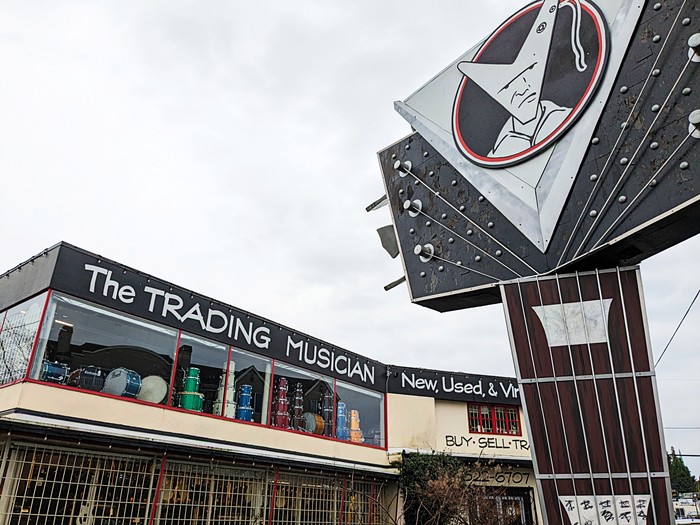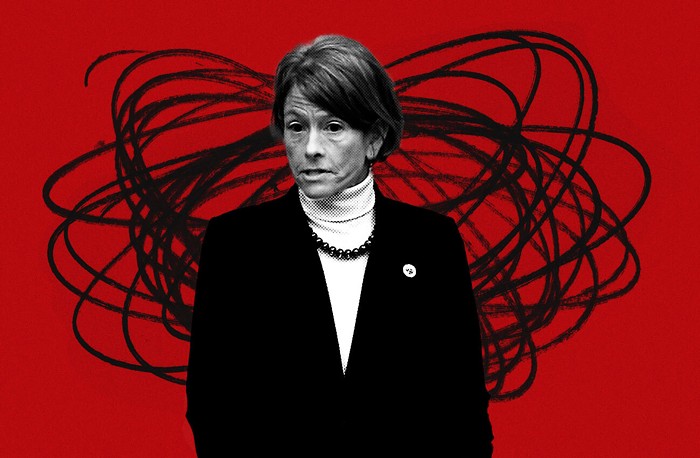A few days later, a variety of homemade posters and flyers once again shared the space, and the message board returned to normal. Later that evening, the Snapple/ EMP poster returned like a virus, covering the existing posters and most of the message board again. Just off of Broadway, across from Urban Outfitters, EMP/Snapple posters plastered another message board. Over in the University District, the same thing happened. It's a poster duel here in Seattle, a paper arms race that's escalating as local artists compete for limited advertising space with bigger companies.
"Some companies just don't have any ethics to allow other posters to exist," says Dave Meinert, a booker for Sit & Spin. "I see it happen a lot." Tim Crowley, organizer of last year's failed effort to repeal the poster ban, agrees: "People are increasingly using the heavy-handed approach to postering," he said. More and more, if you walk around this town you'll see rows and rows of duplicate posters on crowded message boards, sides of buildings, and trash cans: a product/promotion for Snapple, a major-label act like Two Short, a new movie release like Snatch. Street marketing--"guerrilla marketing," or whatever you want to call it--overcompensates with the posters, often covering up local shows because they feel they have to; there's limited advertising space in Seattle. "Because of the lack of space," says the owner of Blueprint, who wishes to remain anonymous, "a space war is going on here, and you don't know if your poster will even be up 10 minutes." You can thank City Attorney Mark Sidran and his 1994 poster ban for that.
The poster ban, a 1990 law that Sidran revamped in 1994 with increased enforcement and fines ($250), makes postering public property (like telephone poles) a crime. Though some would argue that the poster ban has "cleaned up" Seattle, it's obviously been a detriment to local artists and community groups--or, more specifically, poor local artists and community groups. People with money or big-budget backing like a major label or Snapple sponsorship can afford to get around the poster ban. They have the time and money to hire local companies like Keep Posted, which have exclusive postering contracts with restaurants and shops to poster on the inside walls; or they can hire "street teams" like Blueprint to plaster everything in sight. Which leaves everyone else with the message boards--a crowded, desperate piece of plywood that's very usefulness depends on one thing the EMP/Snapple poster team ignored last week: sharing the space.

















